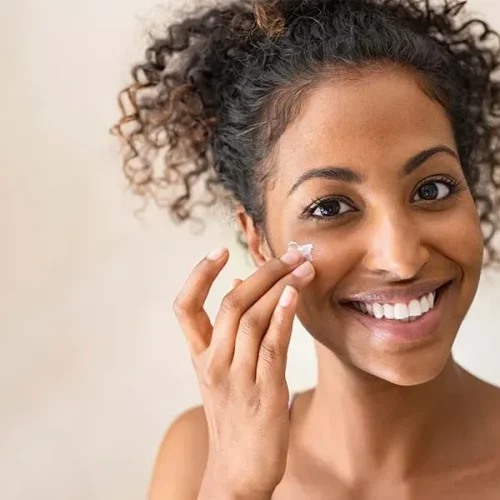Accurate shade selection is critical in cosmetic dentistry to achieve restorations that blend seamlessly with natural teeth. Errors in this process can lead to patient dissatisfaction and costly remakes. This article examines eight common mistakes in teeth shade selection, offering insights for dental professionals and patients seeking high-quality outcomes in London’s thriving cosmetic dentistry scene.
Dr. Sahil Patel of MaryleboneSmileClinic emphasises the importance of precision in shade selection. “Shade matching is both science and art, requiring attention to detail and optimal conditions. Mistakes often stem from rushed processes or poor lighting, which can compromise results. To explore our approach to achieving natural-looking restorations, visit this site for more information.” This guidance underscores the need for meticulous techniques to ensure patient satisfaction.
Mistake 1: Ignoring Lighting Conditions
Lighting significantly impacts shade selection. Natural daylight, ideally around 5500–6500 Kelvin, provides the most accurate colour perception. However, many dental practices rely on fluorescent lights, which can cast bluish or yellowish tints, distorting tooth colour. In London, where overcast skies are common, indoor lighting inconsistencies pose a challenge. For instance, a cosmetic dentist London might select a shade under clinic lighting that appears mismatched in natural light, leading to metameric failure, where colours match under one light source but not another. To mitigate this, practitioners should use colour-corrected lighting or verify shades near a window during daylight hours. Patients can also request shade confirmation under varied lighting to ensure consistency.
Mistake 2: Failing to Account for Tooth Hydration
Tooth hydration affects colour perception. Dehydrated teeth appear whiter due to reduced translucency, which can mislead shade selection. Procedures like rubber dam placement or prolonged exposure during treatment dry teeth, skewing results. A study found that dehydrated teeth can appear up to two shades lighter, impacting the final restoration’s match. Before shade selection, teeth should be moist with saliva, mimicking their natural state. In London’s fast-paced dental clinics, where time pressures are common, rushing this step can lead to errors. Patients considering cosmetic treatments should ensure their cosmetic dentist London allows teeth to rehydrate, especially after whitening, which can temporarily dehydrate enamel.
Mistake 3: Overlooking Adjacent Teeth and Soft Tissues
Shade selection focuses on the target tooth but must consider adjacent teeth and surrounding tissues. Gums, lips, and skin tone influence perceived tooth colour. For example, dark red lipstick can fatigue red colour receptors in the eye, making teeth appear greener. Similarly, ignoring the shade of neighbouring teeth can result in restorations that stand out unnaturally. In cosmetic dentistry, achieving harmony is paramount. A cosmetic dentist London must evaluate the entire smile, taking multiple shade readings from cervical, middle, and incisal regions of adjacent teeth. Patients should remove makeup and wear neutral clothing during consultations to avoid colour interference.
Mistake 4: Relying Solely on Visual Assessment
Visual shade selection, while common, is subjective and prone to error. The human eye can distinguish only about 1% of the million-plus shades detectable by advanced devices. Factors like eye fatigue, colour vision deficiencies, or clinician experience further complicate accuracy. In London, where patient expectations for aesthetic outcomes are high, relying solely on shade tabs like Vita Classical or 3D-Master can lead to mismatches. Instrumental methods, such as spectrophotometers or digital cameras, offer objective data, with studies showing colour differences (∆E) as low as 1.69 compared to visual methods’ higher variability. Combining visual and digital techniques ensures precision, a practice increasingly adopted by skilled cosmetic dentists London.
Mistake 5: Incorrect Operator Positioning and Timing
The dentist’s position and timing during shade selection influence accuracy. An ideal distance of 61–183 cm from the patient’s mouth, with teeth at eye level, optimises colour perception. Deviating from this, such as leaning too close or standing at an angle, distorts perspective. Additionally, eye fatigue accumulates over time, reducing colour discrimination. Morning sessions, when eyes are rested, yield better results. In busy London practices, scheduling constraints may lead to shade selection during suboptimal times or positions, risking errors. Patients can request early appointments with their cosmetic dentist London to ensure optimal conditions for shade matching.
Mistake 6: Neglecting Patient Input and Expectations
Patient satisfaction hinges on aligning expectations with outcomes. Some patients prefer brighter, whiter restorations, while others seek natural blends. Failing to discuss preferences can lead to dissatisfaction, even if the shade is technically accurate. In London’s diverse population, cultural and personal aesthetic ideals vary widely. For instance, younger patients may favour Hollywood-white smiles, while others prioritise subtlety. Dentists must communicate clearly, using shade guides or digital previews to set realistic expectations. Involving patients in the process reduces the likelihood of remakes and enhances trust, a key factor in successful cosmetic dentistry outcomes.
Mistake 7: Inadequate Use of Shade Guides
Shade guides, like Vita 3D-Master, are standard tools but have limitations. The Vita Classical guide, for example, is organised by hue, which can oversimplify complex tooth colours. The 3D-Master, with 26 tabs grouped by lightness and chroma, offers better precision but requires training. Misinterpreting guide tabs or using a single tab instead of multiple references for different tooth regions leads to errors. In London, where advanced materials like zirconia and e.max are common, shade guides must align with restoration materials. Dentists should take multiple shade readings and cross-reference with instrumental tools to ensure accuracy, particularly for anterior restorations where aesthetics are critical.
Mistake 8: Poor Communication with Dental Technicians
Effective shade selection extends beyond the clinic to the dental laboratory. Inaccurate or incomplete communication with technicians can result in restorations that fail to match. Verbal descriptions or single shade tab references are insufficient, as they leave room for interpretation. High-quality photographs, taken with shade tabs in place under controlled lighting, provide valuable context. Digital tools, like intraoral scanners with shade-matching capabilities, further enhance precision. In London’s competitive cosmetic dentistry market, seamless dentist-technician collaboration is essential. Patients should inquire about their dentist’s communication protocols to ensure the final restoration meets expectations.
The Impact of Shade Selection Errors
Shade mismatches have significant consequences. For patients, an unnatural restoration can undermine confidence, especially in visible areas like anterior teeth. Professionally, errors increase remake rates, costing time and resources. Studies estimate that shade-related issues account for up to 50% of restoration remakes, with a 3–6% overall remake rate in dentistry. In London, where cosmetic dentistry is a growing industry, avoiding these mistakes is crucial for maintaining patient trust and practice reputation. By addressing these eight errors, practitioners can deliver restorations that meet both functional and aesthetic demands.
Strategies for Improving Shade Selection
To overcome these challenges, dental professionals can adopt several strategies. First, invest in training to deepen understanding of colour science, including hue, chroma, and value. Workshops on instrumental shade matching, such as spectrophotometry, enhance skills. Second, standardise clinical protocols, ensuring consistent lighting, hydration, and positioning. Third, leverage technology, such as digital cameras with polarising filters or intraoral scanners, to supplement visual methods. Finally, foster open communication with patients and technicians, using visual aids like photographs or digital mock-ups to align expectations and outcomes. These steps elevate the quality of cosmetic dentistry, particularly in a discerning market like London.
Patient Considerations in Shade Selection
For patients, understanding the shade selection process empowers informed decisions. Before undergoing cosmetic procedures, inquire about the dentist’s approach to shade matching. Ask whether they use instrumental tools, how they account for lighting, and how they involve patients in the process. If considering whitening, complete it at least one week before shade selection to allow teeth to stabilise. During consultations, express preferences clearly, whether for a natural or brighter smile. Choosing a reputable cosmetic dentist London with a track record of aesthetic excellence ensures confidence in the outcome.
The Role of Technology in Modern Shade Selection
Advancements in dental technology are transforming shade selection. Spectrophotometers measure colour with high precision, reducing human error. Digital cameras, equipped with calibrated lighting and polarising filters, capture detailed images for technician reference. Intraoral scanners, though less accurate for shade matching (with accuracies ranging from 43.9% to 78.5%), are improving rapidly. These tools complement traditional shade guides, offering a hybrid approach that balances art and science. In London, where patients demand cutting-edge care, adopting these technologies distinguishes top-tier practices from competitors.
Conclusion
Teeth shade selection is a cornerstone of successful cosmetic dentistry, yet it remains fraught with challenges. By avoiding the eight mistakes outlined—ignoring lighting, neglecting hydration, overlooking adjacent tissues, relying solely on visual methods, poor positioning, disregarding patient input, misusing shade guides, and inadequate technician communication—dentists can achieve superior aesthetic outcomes. For patients in London, selecting a skilled cosmetic dentist who prioritises precision and technology ensures restorations that enhance both smile and confidence. As cosmetic dentistry evolves, mastering shade selection will remain essential to meeting the city’s high aesthetic standards.




